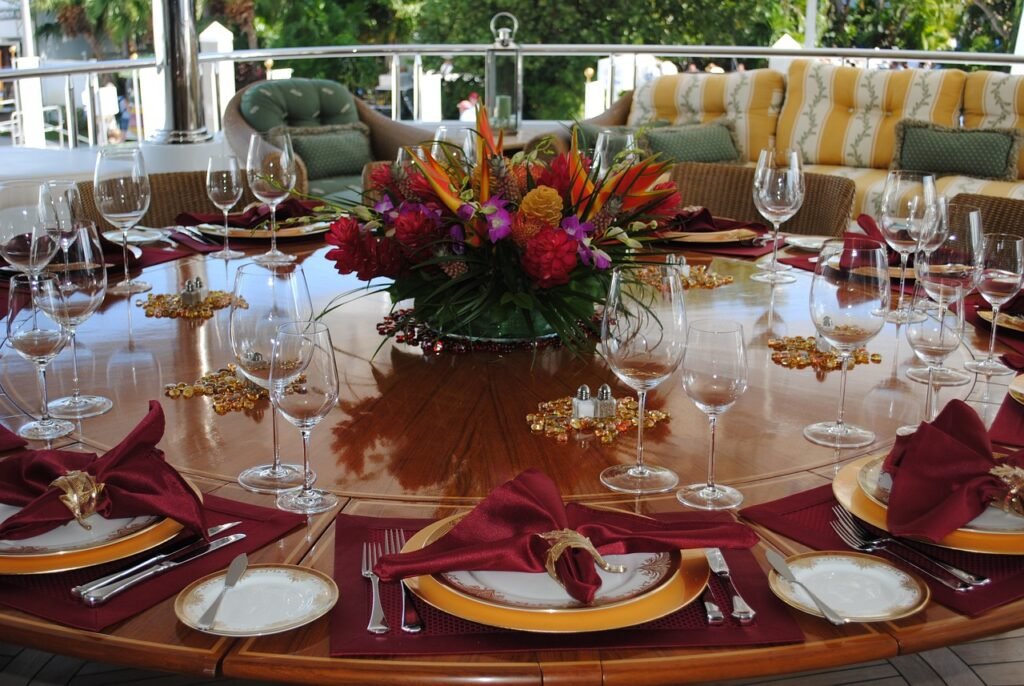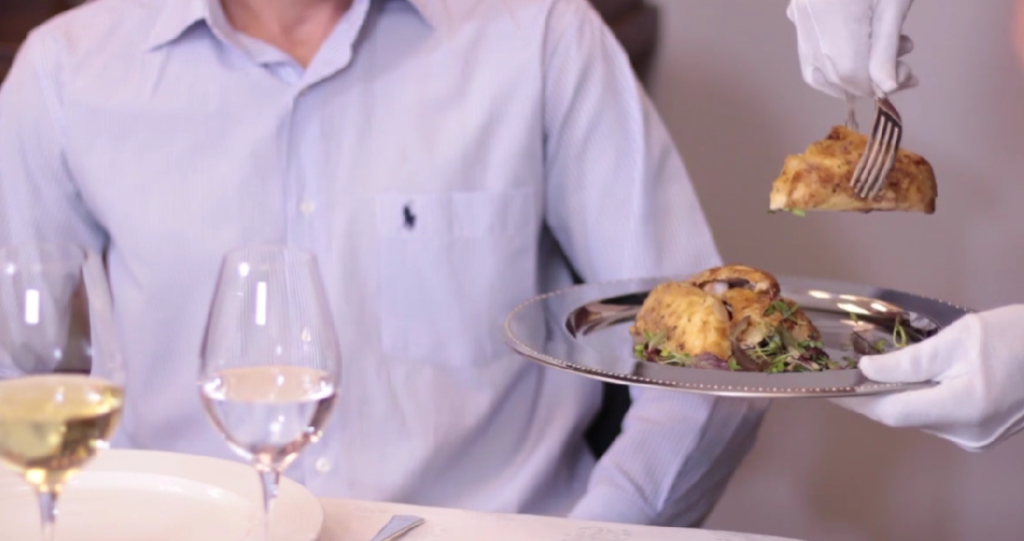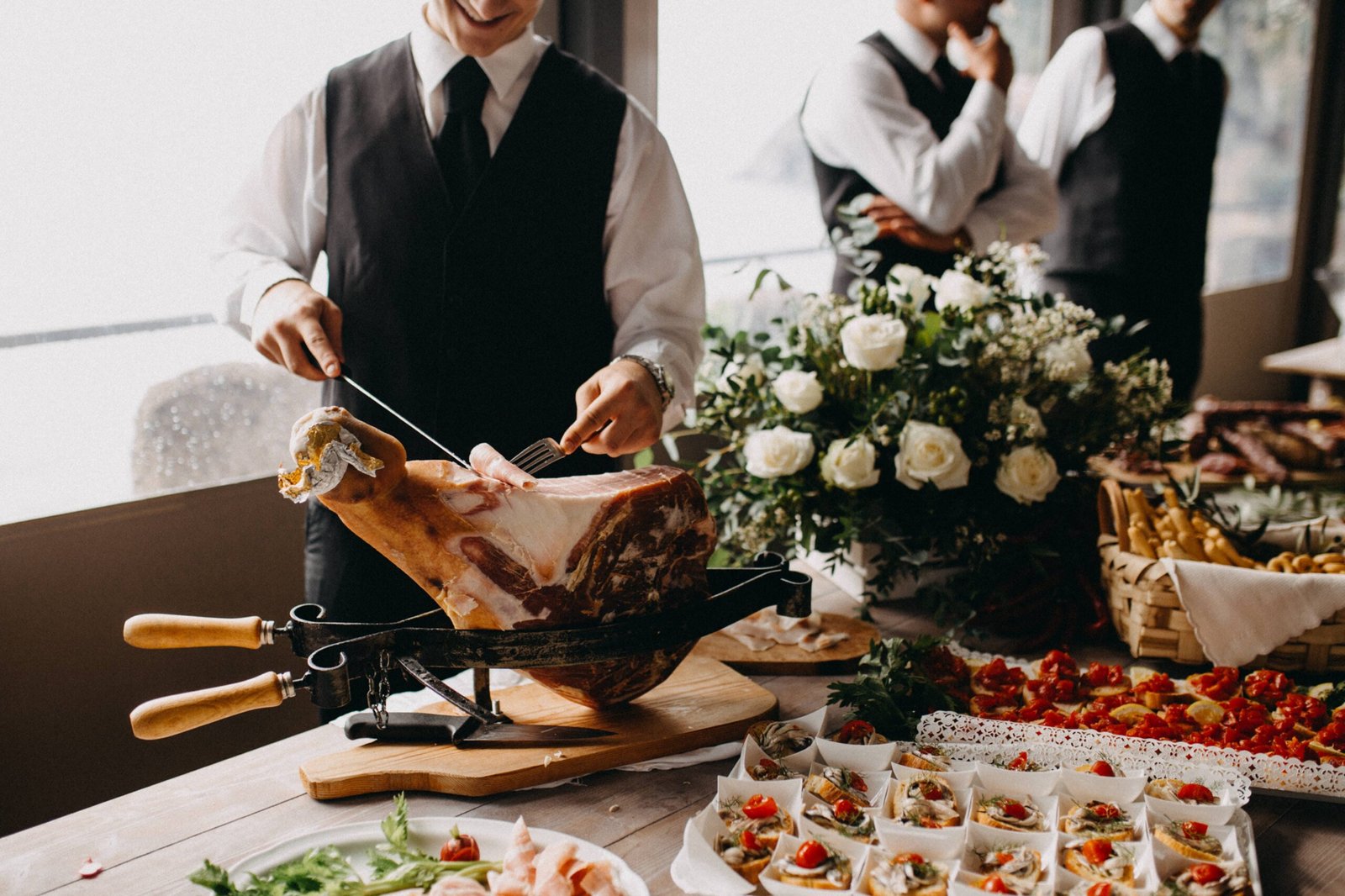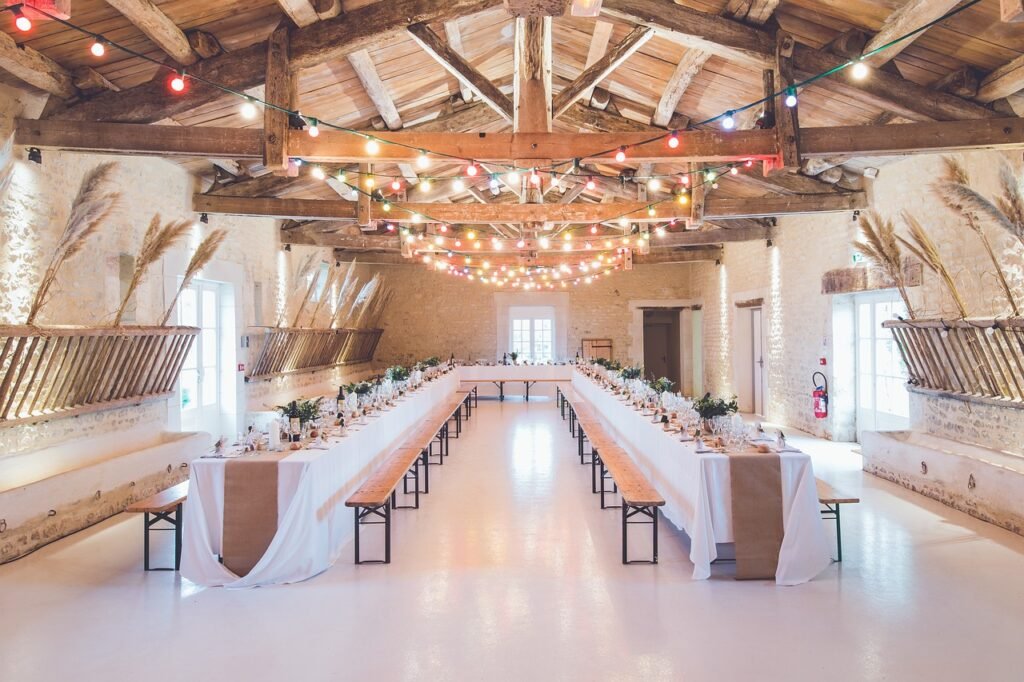Types Of Service Styles In Restaurants
We all have been in buffet restaurants where there is a huge variety of options and we get to choose what we eat at a big buffet table, and we all know that mainly the service there is semi-self-service. But do you know that there are many other types of service styles in restaurants? In case you are wondering why there are so many different service styles in restaurants, well be patient, and let’s discover it together in the below article.
Why so many different types of services?
The variety of services offered in restaurants reflects customers’ diverse needs and preferences, as well as the cultural, economic, and social factors influencing the restaurant industry. Different customers have different preferences when it comes to dining experiences. Some may prefer a quick and casual meal, while others may seek a more formal and leisurely experience. Restaurants offer various services to satisfy their customer’s preferences.
Another factor is the type of cuisine and the overall concept of a restaurant’s service style. For example, some people want to dine at a fine dining restaurant with a focus on haute cuisine which may offer a more formal and elaborate service, while others might choose to go to a fast-food restaurant to get a quicker and efficient service.
Most importantly, the economic factor is another reason why there are so many different types of service styles in restaurants because the economic model of a restaurant can impact its service style. Fine dining restaurants normally provide a higher level of service to justify higher prices, while quick-service restaurants focus on efficiency and lower costs. The meal of the day can influence the type of service offered. Breakfast, lunch, and dinner services require different times to consume in terms of speed, formality, and menu offerings.
Different Types Of Service Styles In Restaurants:
Table Service
Table service is one of the most common services you find in most of the restaurants. Table service is the main category of most of the types of service styles in restaurants which consists of Fine Dining, English service, American/French service, Silver service, and many more.

Table service refers to a style of restaurant service where customers are seated at a table, and waitstaff comes to the table to take orders, serve food and beverages, and attend to other customer needs. This type of service is common in various types of restaurants, ranging from fine dining establishments to casual dining settings. Table service typically involves a more personalized and attentive interaction between the waitstaff and the customers.
The below steps are followed for a table service in most of the restaurants.
- Seating: Customers are seated at a table by the restaurant host or hostess.
- Menu Presentation: A waiter or waitress presents the menu to the customers, provides explanations or recommendations, and takes the customers’ orders.
- Order Delivery: The kitchen prepares the food, and the waitstaff brings it to the table when ready. This may involve the use of trays, carts, or other service aids.
- Beverage Service: In addition to food, waitstaff take orders for and serve beverages, including water, soft drinks, and alcoholic drinks.
- Checking In: Throughout the meal, the waitstaff may check in on the customers to ensure satisfaction, refill drinks, and address any additional needs.
- Clearing Dishes: After the customers finish each course, the waitstaff clears the table of empty plates and utensils.
- Presenting the Check: At the end of the meal, the waiter or waitress presents the check to the customers.
Fine Dining

Fine dining can’t be missed on the types of service styles because this service is a sophisticated and formal style of restaurant service that offers an upscale and luxurious dining experience. This type of service is characterized by attention to detail, impeccable presentation, and a high level of customer service. Fine dining restaurants are often known for their elegant ambiance, upscale décor, and an extensive menu featuring gourmet cuisine. Some main characteristics of fine dining service are as below:
- Table Setting: Tables are meticulously set with high-quality tableware, fine linens, and polished silverware. Attention is given to creating an aesthetically pleasing and comfortable dining environment.
- Service Staff: The service staff in fine dining restaurants are highly trained and attentive. They normally have a deep knowledge of the menu, including details about the ingredients, preparation methods, and wine pairings.
- Menu: Fine dining menus are often extensive, featuring a range of gourmet dishes prepared with precision and creativity. The menu may include multiple courses, such as appetizers, soups, salads, main courses, and desserts.
- Presentation: Emphasis is placed on the presentation of each dish. Chefs often use intricate plating techniques to create visually stunning arrangements that complement the flavors of the food.
- Wine Service: Fine dining restaurants normally offer a wine list, and the staff is trained to provide expert recommendations and assist with wine pairings. Wine service is often performed with precision, including decanting and proper glassware.
- Personalized Service: Fine dining restaurants strive to provide a personalized and attentive service experience. Servers may be more formal, addressing guests by name and catering to their individual preferences.
English Service or Silver Service

English service, also as “silver service,” is a traditional style of table service in restaurants. This method consists of presenting food during meals and involves the server using a combination of a silver spoon and fork held in one hand to individually serve each food item onto the diner’s plate. This service style is considered more formal and is often associated with upscale or fine-dining restaurants. Here are some main points of English/Silver service:
- Plate Presentation: The food is usually brought to the dining area on platters or in serving dishes, and it is then plated individually for each guest at the table.
- Use of Silverware: This style of service often involves the use of silverware, including serving spoons, forks, and tongs, which are used by the waiter or waitress to serve the food onto the guests’ plates. Most of the time is required to carve the meat and fillet the fish on the table.
- Tableside Preparation: In some cases, certain dishes or components may be prepared or finished at the table, adding a theatrical element to the dining experience.
- Waitstaff Skill: English/Silver service requires a high level of skills and precision from the waitstaff. They are trained in proper serving techniques, including holding serving utensils correctly and transferring food to the diners’ plates.
- Service Utensils: Waiters typically use serving spoons, forks, and other utensils to handle and serve the food. These utensils are often made of silver, contributing to the term “silver service.”
- Formality: English/Silver service is associated with a more formal and elegant dining atmosphere. It is often found in fine dining restaurants and is suitable for occasions where a heightened level of service is desired.
- Etiquette and Protocol: Both the guests and the waitstaff are expected to adhere to certain etiquette and protocols during silver service. This includes proper handling of silverware, serving from the left when serving food, clearing from the right, and maintaining a high level of professionalism.
- Customer Interaction: Waitstaff engages with diners during the service, offering recommendations, answering questions, and ensuring that the dining experience is personalized and enjoyable.
French Service
French service, also known as “à la française,” is a traditional and very detailed style of table service in restaurants. It is characterized by the presentation of food at a table on platters and dishes, allowing diners to serve themselves. Most of the fine dining restaurants have the same service and keep in mind that It is very elaborate and expensive type of service. Here are some key features of French service:
- Presentation: The food is presented on serving platters or in dishes, which are placed on the table. The diners then help themselves to the food.
- Tableside Trolley or Cart: In some instances, a waiter may use a trolley or cart to bring the dishes to the table. This adds a touch of elegance and allows for a visually appealing presentation.
- Diners’ Involvement: Diners actively participate in the serving process, choosing the amount of each dish they want and passing the platters to others at the table.
- Communal Dining: French service encourages a sense of shared dining experience, as diners interact with one another while serving and enjoying the meal.
- Waitstaff: More than 5 waitstaff are required for a proper high-end service
- Formality: While French service is often associated with a more formal dining setting, it can be adapted to different levels of formality based on the restaurant’s style and the occasion.
- Service Side: This includes proper handling of silverware, serving from the left, clearing from the right, and maintaining a high level of professionalism.
- Table Settings: The table is usually set with appropriate utensils and serving dishes to facilitate the communal dining experience.
Cart Service

Cart service in restaurants refers to a style of serving where a mobile cart (Guèridon trolley) is used to present and serve food or beverages directly to diners at their table. This approach adds an interactive and personalized element to the dining experience. Cart service enhances the overall dining experience by providing a more interactive and personalized touch to the meal, allowing diners to make specific choices and witness the preparation process. This type of service is normally used in fine dining restaurants or those aiming to offer a higher level of service and presentation.
There are various types of cart services in restaurants, including:
- Dessert Carts: These carts are laden with a variety of desserts, and diners can choose their preferred sweet treats, which are then served tableside.
- Cheese Carts: Typically found in upscale restaurants, these carts carry an assortment of cheeses. The server may describe each cheese and allow diners to select their choices.
- Tableside Salad Carts: A cart with fresh salad ingredients is brought to the table, and diners can customize their salads according to their preferences.
- Guéridon Service: This involves the preparation or finishing of dishes at the table. For example, a server might carve meat, fillet fish, or prepare a flambéed dish right in front of the diners.
- Beverage Carts: These carts are used for serving and preparing drinks such as cocktails, coffee, or after-dinner liqueurs directly at the table.
Buffet Service

Buffet service in restaurants is a style of dining in which food is arranged on a self-service table or counter, and diners can help themselves to the dishes of their choice. Buffets are common in various types of establishments, including restaurants, hotels, and event venues. Buffet service is suitable for various occasions and can be adapted to different cuisines and themes. While it may lack the personalized service of table-side dining, it offers efficiency, variety, and a more casual dining experience. Buffets are popular for breakfast buffets, lunch buffets, dinner buffets, and special events like weddings and parties.
The main characteristics of buffet service are as below:
- Self-Service: Diners serve themselves from a variety of dishes that are displayed on long tables or counters. The layout often includes appetizers, main courses, side dishes, salads, desserts, and beverages.
- Variety: Buffets typically offer a wide range of food options, allowing diners to choose from a variety of dishes based on their preferences. This format is popular for its versatility and the ability to cater to diverse tastes.
- All-You-Can-Eat: In many buffet setups, diners pay a fixed price and can eat as much as they want from the available selection. This “all-you-can-eat” model is a notable characteristic of buffet service.
- Casual Atmosphere: Buffet service is often associated with a more casual and relaxed dining atmosphere. It is commonly used for breakfast, brunch, lunch, and certain types of events.
- Flexibility: Buffet service allows diners to customize their meals by choosing the specific items and quantities they desire. It provides flexibility for individuals with different dietary preferences and restrictions.
- Cost-Effective for Large Groups: Buffet service can be a cost-effective option for catering to a large number of people, such as in banquet halls, conferences, or events with diverse attendee preferences.
Banquet Service
Banquet service is mainly used for large gatherings or events and is normally held in a designated banquet or event space. This service is commonly connected with hotels, conference centers, restaurants, and other hospitality establishments that can host events such as weddings, conferences, parties, and corporate functions. In this type of service normally the food has been pre-ordered and served by the waiters in courses. Some key aspects of this type of service are as below:
- Menu Planning: Banquet menus are often pre-planned and may offer various options to cater to different tastes and dietary preferences. The event organizer normally selects the menu in recommendation with the banquet service provider in advance.
- Food Preparation: The culinary team prepares the food according to the selected menu. Sometimes the main challenge happens in preparing and serving a large quantity of food simultaneously while maintaining quality and presentation standards.
- Service Staff: Banquet service requires a well-trained team of servers, waitstaff, and catering personnel. The service team is responsible for setting up the banquet area, serving food and beverages, and ensuring guests have a positive dining experience.
- Arrangement: Coordinating and making proper arrangements is crucial in banquet service. This includes arranging seating, managing the flow of service, and ensuring that all aspects of the event run smoothly. Banquet staff may also be involved in setting up audio-visual equipment, decorations, and other event-related elements.
- Beverage Service: In addition to food, banquet service often includes the provision of beverages, both alcoholic and non-alcoholic. This involves setting up bars, serving drinks, and managing consumption in compliance with applicable laws and regulations.
- Clean-up: After the event, the banquet service team is responsible for clearing tables, cleaning up the banquet area, and ensuring that the venue is returned to its original condition.
These are the main types of service styles used in Restaurants. Is important to mention that apart from the above styles, there are many more such as Room service & Cafeteria but aren’t that much related to restaurants.
Featured Image From Pexels (Not copyrighted and free commercial use)




Your point of view caught my eye and was very interesting. Thanks. I have a question for you.
Thank you for your comment. Yeah, please tell me?